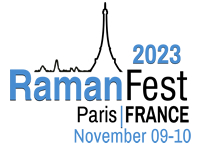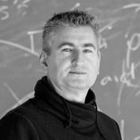 |
| KEYNOTE |
|
 |
| . |
|
|
Javier Aizpurua
CFM/CSIC-UPV/EHU-DIPC, Spain
Keynote – Plenary Session
Javier Aizpurua is a Research Professor of the Spanish Council for Scientific Research (CSIC) at the Center for Materials Physics in San Sebastián, Spain, where he leads the "Theory of Nanophotonics Group" ( http//cfm.ehu.eus/nanophotonics). Aizpurua has developed theory to understand the interaction of light and nanostructured materials in a variety of field-enhanced spectroscopy and microscopy configurations, such as in SERS, SEIRA, s-SNOM, STM, or STEM. The understanding of the optical response of complex nanosystems has been the main focus of his research, particularly in the field of optical nanoantennas and nanoplasmonics, with special emphasis on the role of quantum effects in nanophotonics. |
|
|
|
|
 |
| KEYNOTE |
|
 |
| . |
|
|
Vartkess Apkarian
University of California, Irvine, USA
Keynote – Plenary Session
Vartkess Ara Apkarian is a noted physical chemist and a Professor of Chemistry at The University of California, Irvine. He is the Director of Center for Chemistry at the Space-Time Limit, a National Science Foundation Center for Chemical Innovation. He graduated from University of Southern California with B.S. degrees in Chemistry followed by Ph.D. degree in Chemistry from Northwestern University. Following a postdoctoral fellowship at Cornell University, he joined the University of California as Chemistry faculty in 1983. He served as the Chair of the Chemistry Department (2004-2007) at UC Irvine. His teaching and research has been recognized with awards including the Humboldt Prize (1996), USC Distinguished Alumnus (2007), Charles Bennett Service Through Chemistry Award of ACS (2008) ACS Award in Experimental Physical Chemistry (2014), Honorary Doctorate from the University of Jyväskylä, Finland (2016). His recent scientific contributions include creating a single-molecule sensor and developing tools to confine the light to atomic dimensions. His team visualized the internal structure of single molecules and imaging the normal vibrational modes of single molecules.
|
|
|
|
|
 |
| INVITED |
|
 |
| . |
|
|
Thomas Bocklitz
Universität Bayreuth, Germany
Invited – Plenary Session
Prof. Dr. Thomas Bocklitz is head of the UBT research group ‘Artificial Intelligence in Spectroscopy and Microscopy’ at the University of Bayreuth and head of ’the Leibniz-IPHT department ‘Photonic Data Science’ at the Leibniz Institute of Photonic Technology, Germany. His research is dedicated to exploring the entire life cycle of photonic data, including data generation, inverse modelling of photonic processes, artificial Intelligence based data modelling and FAIR photonic data management. He received prestigious awards like the Bruce Kowalski award 2015 and the Kaiser-Friedrich research award 2018. Recently, he received funding from the European Research Council (ERC) for the ERC-CoG project ‘STAIN-IT’.
|
|
|
|
|
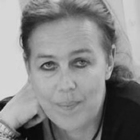 |
| INVITED |
|
 |
| . |
|
|
Silke Christiansen
Fraunhofer-Institut für Keramische Technologien und Systeme IKTS, Germany
Invited – Plenary Session
Prof. Silke Christiansen has significant experience in the field of nano-materials and context microscopy and spectroscopy, bio-medical sensing, bio-technology and opto- as well as large-area electronics. She advanced materials based on correlated microscopies and spectroscopies for which she operates a labs@location unit with Carl Zeiss Microscopy. She gained her scientific experience at various institutions in Germany and the US, e.g. IBM’s T.J. Watson Research Center in Yorktown Heights, NY, USA, Columbia University, NY, USA, Max Planck Institute for Microstructure Physics and the Science of Light in Halle and Erlangen, Leibnitz Institute for Photonic Technology in Jena and the Friedrich-Alexander University Erlangen-Nürnberg. She has more than 350 peer-reviewed publications, more than 12 patents/- applications, more than 11240 citations and an h-index of 54.
|
|
|
|
|
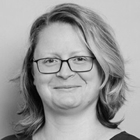 |
| INVITED |
|
 |
| . |
|
|
Dana Cialla-May
Leibniz Institute of Photonic Technology, Germany
Invited – Plenary Session
Dana Cialla-May studied chemistry at the Friedrich Schiller University (FSU) Jena, Germany from 2001 to 2006. She completed her doctoral thesis in the working group of Prof. Dr. Jürgen Popp at the FSU Jena in the field of surface and tip-enhanced Raman spectroscopy in 2010. Since 2011 she has been a working group leader at the Leibniz Institute for Photonic Technology in Jena. Her main research interests are powerful plasmonic sensor surfaces for SERS-based detection schemes and their application in bioanalytics such as the detection of drugs, metabolites, biomarker or signaling molecules.
|
|
|
|
|
 |
| INVITED |
|
 |
| . |
|
|
Marcus Cicerone
Gatech, USA
Invited – Plenary Session
Marcus Cicerone is a professor of Chemistry at the Georgia Institute of Technology. One of Professor Cicerone’s research areas is the development and application of coherent Raman imaging systems. In 2004 Dr. Cicerone’s group introduced broadband coherent anti-Stokes Raman scattering (BCARS) microscopy, which generates label-free chemical maps of cells and tissues at 300 nm spatial resolution, and full Raman spectra at each pixel, acquired orders of magnitude faster than possible with spontaneous Raman scattering. This work was recognized among the top 10 innovations in photonics in 2014. His group continues to apply BCARS to address recalcitrant biological problems where conventional imaging techniques are insufficient.
|
|
|
|
|
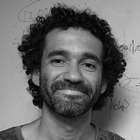 |
| INVITED |
|
 |
| . |
|
|
Hilton B. de Aguiar
École Normale Supérieure / CNRS, France
Invited – Plenary Session
Hilton B. de Aguiar is an associated researcher at the Laboratoire Kastler Brossel. He holds a PhD (2011) from EPFL/Lausanne (Switzerland), jointly with the Max-Planck Institute/Stuttgart (Germany). His research activities span from soft matter physics to ultrafast nonlinear spectroscopy, with 40+ papers and a book chapter. During his time as a Junior Research Chair at the Ecole Normale Superieure/Paris, he developed the compressive Raman imaging concept, a framework now reaching record imaging speeds in spontaneous Raman imaging. Following this development, he expanded this computational activity to tackle various challenges in Raman imaging using computational microscopy frameworks, such as super-resolution and deep imaging in opaque media. He is a Senior Member of the Optica Society.
|
|
|
|
|
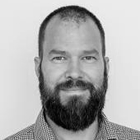 |
| INVITED |
|
 |
| . |
|
|
Otakar Frank
J. Heyrovsky Institute of Physical Chemistry, Czech Republic
Invited – Plenary Session
Otakar Frank is a senior scientist at the Heyrovsky Institute of Physical Chemistry of the Czech Academy of Sciences in Prague. He is the Head of the Department of Electrochemical Materials and Vice-chair of the Institute’s Supervisory Board. His main research interests revolve around implementing multi-modal spectroscopic techniques, combining external perturbations through electrochemistry, mechanical deformation, or temperature, with AFM-based methods and (tip-enhanced) Raman and photoluminescence, to investigate physico-chemical phenomena in novel functional, mostly low-dimensional materials.
|
|
|
|
|
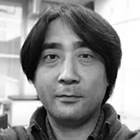 |
| KEYNOTE |
|
 |
| . |
|
|
Katsumasa Fujita
Osaka University, Japan
Keynote – Plenary Session
Katsumasa Fujita is Professor of Applied Physics at Osaka University. He obtained the BSc, MSc, and Ph.D. in Applied Physics in 1995, 1997, and 2000, respectively, from Osaka University. After working as a postdoctoral fellow at Kyoto Prefectural University of Medicine, he joined Osaka University as a faculty member in 2002 and was promoted to a full professor in 2018. He has been working on the development of high-resolution and high-speed Raman imaging techniques for biomedical research, especially using spontaneous Raman scattering. He also demonstrated the use of alkyne, a carbon-carbon triple bond, as a small tag for imaging small molecules by Raman microscopy.
|
|
|
|
|
 |
| KEYNOTE |
|
 |
| . |
|
|
Angela R. Hight Walker
NIST, USA
Keynote – Plenary Session
Dr. Hight Walker is a senior scientist at the National Institute of Standards and Technology (NIST), where she began her career as a National Research Council Postdoctoral Fellow. Her research focuses on advancing optical spectroscopies and their applicability to characterize low-dimensional quantum nanomaterials. Her research team has developed unique hyphenated techniques such as magneto-Raman, where samples are probed as a function of laser wavelength, temperature, magnetic field and back gating. These novel capabilities probe the underlying photophysics and quasiparticles of nanomaterials. An issue of great importance to Angela is encouraging the young and under-resourced to participate in science. Recruiting, supporting, and mentoring underrepresented students and postdoctoral researchers is a passion. Dr. Hight Walker is a Fellow of the APS and presently the Chair of the APS Committee on the Status of Women in Physics (CSWP). Angela is actively involved in international documentary standards activities focused on nanotechnology, particularly the US technical committee on Measurement and Characterization to ISO TC229. Also, she is an enthusiastic member of two VAMAS committees, TWA 41 and 42, where several international round-robin studies are underway to validate measurement protocols for nanomaterials. Finally, Dr. Hight Walker leads a team composed of experts from the National Metrology Institutes concerned with enabling SI-traceable, Raman measurements.
|
|
|
|
|
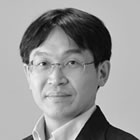 |
| INVITED |
|
 |
| . |
|
|
Hideaki Kano
Kyushu University, Japan
Invited – Plenary Session
Hideaki Kano obtained his Ph.D. in 2001 at the University of Tokyo, where he worked at the structural chemistry laboratory in department of chemistry as an assistant professor between 2001 and 2007 and as an associate professor between 2007 and 2011. He was them moved to University of Tsukuba as an associate professor of institute of applied physics between 2012 and 2020. Hideaki Kano is professor of department of chemistry, faculty of science, Kyushu University. His research focuses on biomedical molecular imaging using nonlinear optical processes, in particular nonlinear Raman scattering.
|
|
|
|
|
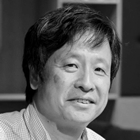 |
| KEYNOTE |
|
 |
| . |
|
|
Tamiki Komatsuzaki
Hokkaido University, Japan
Keynote – Plenary Session
Tamiki Komatsuzaki holds a professor of Research Institute for Electronic Science, Hokkaido University, Japan, since 2007, moving from Kobe University, Japan (1999-2007). Previously, he was appointed as research associate at Department of Chemistry, University of Chicago, USA (1996-1999) after he got a PhD at The Graduate University for Advanced Studies, Institute for Molecular Science (Okazaki, Japan)(1994). He is an author of more than 130 publications in peer-reviewed scientific journals over interdisciplinary researches, covering from extraction of state space networks and energy landscapes from single molecule time series, to bridging information science and Raman microscope to accelerate cell or tissue diagnosis while preserving its accuracy. He was served as the vice president of biophysical society of Japan, recipient of HFSP grant award, and the editorial boards such as Sci. Rep.
|
|
|
|
|
 |
| INVITED |
|
 |
| . |
|
|
Sophie Lecomte
Univ. Bordeaux-CNRS, France
Invited – Plenary Session
Sophie Lecomte studied chemistry at the Pierre et Marie Curie University. She received her PhD from the University Pierre et Marie Curie in Paris (1995). After post-doctoral research with Prof. W.E. Smith at the Strathclyde University (Glasgow, UK) (1996) and with Prof. Peter Hildebrandt (Max Planck Institut fur Stralenchemie, Mulheim an de Ruhr, Germany) (1996-1998), she joined the Laboratoire de dynamique, interaction et réactivité (LADIR) in Paris as a CNRS Chargé de Recherche (1998). In 2007, she moved to the Institute of Chemistry and Biology of Membranes and Nano-objects (CBMN) in Bordeaux. Since 2013 she has been a CNRS Research Director.
|
|
|
|
|
 |
| INVITED |
|
 |
| . |
|
|
Philippe Leproux
Université de Limoges, France
Invited – Plenary Session
Philippe Leproux obtained his PhD in 2001 at the University of Limoges, France, on the design of optical power amplifiers based on rare-earth doped double-clad fibers. Since 2002, he is an Associate Professor at the University of Limoges in the fields of photonics and ICTs. His research activities at XLIM Institute mainly deal with nonlinear fiber optics - especially supercontinuum generation - and biophotonics, from the design of new optical fibers to the demonstration of innovative biology-oriented experiments, like MCARS microspectroscopy. Dr. Leproux is the co-founder of LEUKOS company, Limoges, France, a spin-off from the University of Limoges and the French CNRS manufacturing supercontinuum lasers. He authored or co-authored over 250 publications/conferences and 14 patents.
|
|
|
|
|
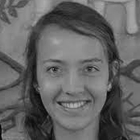 |
| KEYNOTE |
|
 |
| . |
|
|
Michaela Poth
Roche, Germany
Keynote – Plenary Session
|
|
|
|
|
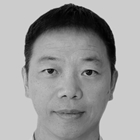 |
| KEYNOTE |
|
 |
| . |
|
|
Bin Ren
Xiamen University, China
Keynote – Plenary Session
Professor Bin Ren received his PhD degree in 1998 from Xiamen University and worked there afterwards. He is a Fellow of the International Society of Electrochemistry and recipient of Electrochemistry Award of Analytical Chemistry Division (ACS), AvH Fellow, National Science Fund for Distinguished Young Scholars. He is now the Vice Dean of the College of Chemistry and Chemical Engineering and Associate Editor of Analytical Chemistry (ACS). His research interest is focuses on the development of new instruments and spectroscopic methods, mainly related to tip-enhanced Raman spectroscopy, surface-enhanced Raman spectroscopy, and nano-spectroelectrochemistry methods and their application in studying surface and interface processes and cell and biological systems
|
|
|
|
|
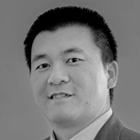 |
| INVITED |
|
 |
| . |
|
|
Jian Xu
Qingdao Institute of Bioenergy and Bioprocess Technology, China
Invited – Plenary Session
XU Jian ( xujian@qibebt.ac.cn) currently serves as Director of Single-Cell Center, Director of BioEnergy Division and Assistant Director General at CAS-QIBEBT. He obtained B.S in Biotechnology from Peking University in 1997, and M.S. in Computer Science and PhD in Biochemistry under Jeffrey Gordon from Washington University in St. Louis in 2003. After serving as Research Instructor at Genome Institute of Washington University, he joined CAS-QIBEBT) in 2008 and has been the founding Director of Single-Cell Center ( http://www.single-cell.cn/), CAS-QIBEBT. The Center invented the Ramanomics Instrument Series (http://www.singlecellbiotech.com/), including RACS-Seq, FlowRACS, EasySort, etc, to support industrial biotechnology, precision medicine, environmental remediation and synthebic biology. Moreover, the center develops microalgal synthetic biology (using Nannochloropsis oceanica as a model) for scalable CO2 fixation and photosynthetic production of nutriceuticals and biofuels. Jian has published over170 papers, with >15,000 citations (H-index 60; https://scholar.google.com/citations?user=QEn_uXQAAAAJ&hl=zh-CN&oi=ao). He is a founding senior editor of mSystems. His contribution was recognized by career awards from NSFC, MOST and CAS, including National Distinguished Young Scholars Award (2014), National Young-Scientist Award for Science and Technology (2016) and VCANBIO Award for Biosciences and Medicine (2016). |
|
|
|
|
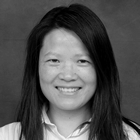 |
| KEYNOTE |
|
 |
| . |
|
|
Huabing Yin
University of Glasgow, UK
Keynote – Plenary Session
Dr Yin received her BSc (1992) and MSc (1995) in Chemistry in China. She obtained a PhD (2002) in Chemical Engineering at the University of Wales, Swansea, focusing on nanofiltration membrane development and applications. From 2003 to 2005, she worked as a postdoctoral researcher at the University of Southampton, developing an optical biosensor for gene analysis. Shortly after joining the University of Glasgow as a postdoctoral researcher, developing microfluidics for high throughput cellular analysis, she was awarded a personal research fellowship from the Royal Society of Edinburgh (2006-2009). After this she was appointed to a lectureship in 2010 and promoted to a senior lecturer in 2011.
|
|
|
|
|
| |
|
|
